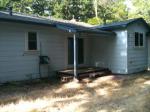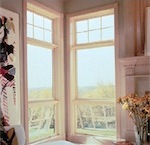These new lighting technologies now let you not only choose the quantity of light, but also the quality of light as well. Quality of light includes how warm or cool the light appears and how the light makes the color of objects look to you. Choosing the right quantity and quality of light can let you decorate your home and also provide a comfortable set of lighting.
It’s great to get the many options and features, but it also means that we need to choose the lights carefully.
LED Light Fixtures and Lamps
The U.S. Department of Energy (DOE) created the LED Lighting Facts program to assure that the performance of solid-state lighting (SSL) products is represented accurately as products reach the market. Sensitive to the setbacks that plagued consumer adoption of other new technologies, DOE developed the LED Lighting Facts program to manage user expectations and prevent the exaggerated performance claims that are often prevalent with new technologies.
The key information you should look for are:
- Light Output (in lumens). The higher the number, the brighter is the light. As comparison, a 100W incandescent light bulb typically emits 1300 to 1400 lumens.
- Watts. This is the electric energy consumption. It is related to the amount of light output. We know that LED lights are much more energy efficient than incandescent lights. However, LED technology is constantly improving. More efficient ones are appearing on shelves on a regular basis, so look out for new models.
- Color Accuracy (measured in Color Rendering Index or CRI). Generally this tells how the colors of objects appear under this light as compare to a traditional incandescent light. The value ranges from 0 to 100, 100 means a practically perfect match with the incandescent light. Lights with CRI at 90 or above will give you color sense that you are accustomed to.
- Light Color (measured in Correlated Color Temperature or CCT). This value tells how “warm” or “cool” the light is. The CCT is measured in degrees Kelvin (K) and ranges from about 2700K to 6500K for commonly used lights. Incandescent lights are warmer and they are typically rated at about 2700K. Sunlight is cooler and it is ranges from 6000K or higher. Homeowners tend to like the warmer color. Indeed studies have shown that warmer color at night and cooler color during the day match the human circadian cycle, hence better for our health. Depending on the application and personal preference, lights with CCT between 2700K and 3500K will generally work well in a home. For instance, you may choose 2700K lights for the bedrooms, living and dining room, 3000K for the kitchen, studies and bathrooms, 3500K for the garage.
Besides excellent performance, LED lights offer additional features, such as better dimming control, color changes, etc that can change the living experience of a home. Beware that for dimming to work, a compatible dimmer must be used. Check the product specification or check with the manufacturer. See also our previous post on dimmers.
Non-LED Screw-on Lamps
While the DOE wants to provide as much information about an LED light as possible to help make the LED introduction successful, there are still many other types of lamps on the market. Knowing the energy efficiency and quality of these lights are still very important as many of us may choose to use these lamps for some time to come. For non-LED screw-on lamps, such as CFL bulbs and the allowed incandescent bulbs, a simpler set of information is also required by the Federal Trade Commission. The type of information is consistent with those provided for LED lighting. The following image of the label contains explanation the details. Look carefully at the label and you may find some CFL light bulbs that provide very good color









Dear Sr.,
Thanks for the valuable information. I have couple questions
1. I know most of led light comes with driver and radiant which waste the
conversation heat from AC to DC (retrofit). Driver life is much shorter
than led itself ? Is there any led light w/o driver which able to direct
from solar or wind and a regulated DC power ? Where I can find
2. Do we have such system, solar panel –> converter –> regulator –>LED
3. What is the voltage loss for the length of those DC wire ?
4. Will DC going to be the trend of future since year 2020 will be zero net energy ?
Thank you for your time ?
Allen
The crux of your questions is really around a DC wiring system for the entire home. Theoretically this is the more efficient way of using electric power and technically it can be done. However, given the number of AC appliances in the home, a complete conversion is going to be hard. Remember we tried to convert from the imperial system to metric system and failed. It can happen but will take time and money. However, I have a friend whose house is completely off grid – he has a system of solar PV and batteries and he runs his entire house on 24V circuits.
There are LED lamps powered by 12V/24V DC on the market. So if you have a part of the house wired for 12V DC these lamps should work for you. I assume that you should also be able to tap into your solar PV system before it gets into the inverter to extract a 12V DC current. Check with your solar PV supplier.
Voltage drop will depend on the wires (length, gauge and material, interconnection etc). I have not looked into the specifics to provide any guidance.